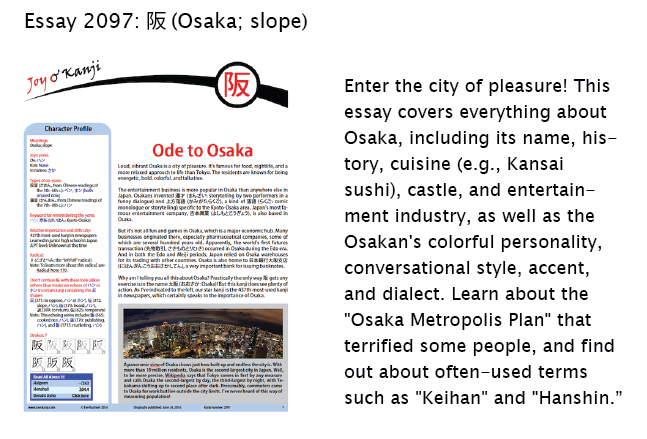The Eyes and Nose Have It
Let's do a quiz! Match each Japanese expression to one meaning:
1. 目鼻 (めはな) eyes + nose
a. perceptive person
b. sensory experience
c. shape, form
d. hills and valleys
2. 風味満点 (ふうみまんてん) wind + flavor + full + marks
a. full experience
b. full flavor
c. traces, remains
d. passing of the seasons
3. 枕営業 (まくらえいぎょう) pillow + business (last 2 kanji)
a. store selling bedding
b. selling a useless item ("fluff")
c. chitchat in bed
d. sleeping with a business partner or customer to get ahead in business
I'll block the answers with a preview of the latest essay:

Ready for the answers? Here we go:
1.c. 目鼻 (めはな: eyes + nose) means "shape, form" or “the outline of a matter.” The idea is that the eyes and nose constitute the basic components of a face. As it happens, 目 and 鼻 serve as the basic components of this phrase:
卵に目鼻 (たまごにめはな: lovely white oval face) egg + eyes + nose
My proofreader says people use this to mean “She’s so lovely that her face looks like an egg with eyes and a nose on it,” referring to the whiteness and smoothness of her skin!
Here's another phrase with 目鼻 at its root:
目鼻が付く (めはながつく: to complete most of something; take a concrete shape) eyes + nose + to attach
When you're drawing a face or making a doll and have the nose and eyes in place, the important parts have been finished, and you can tell how the final result will look, says Gogen.
That intrigues me because as essay 1899 on 竜 (dragon; imperial; “big dragon” radical) shows, drawing the pupils of the eyes may be the last step in a painting, not one of the first. That's what we find with this expression, in which the last kanji is non-Joyo:
画竜点睛 (がりょうてんせい: finishing touch; completing (something) by executing the final, critical step) picture + dragon + drawing + pupil
As the legend goes, a famous Chinese artist drew four dragons on a temple wall. He intentionally omitted the pupils from their eyes. When people asked why, he said, “If I draw pupils, the dragons will fly away.” Nobody believed him, so he drew pupils on two of the four dragons, and they promptly took flight.
2.b. 風味満点 (ふうみまんてん: wind + flavor + full + marks) means "full flavor." If you take a noun and add 満点, it means that the noun in question is very good. Well, not the noun per se but the item! You're giving it "full marks" or a "high grade" because you've found nothing to complain about, and the item may even be flawless.
Similarly, サービス満点 means that one is very satisfied with the service at a restaurant or elsewhere. And 栄養満点 (えいようまんてん) means “very nutritious.”
I found the phrase 風味満点 on a package with this wording:
煮食、漬菜にして風味満点
Simmering or pickling this vegetable brings out the full flavor
煮食 (しゃしょく: simmering and eating); 漬菜 (つけな: pickled vegetable)
Incidentally, the vegetable is a type of Chinese cabbage (also known as a napa cabbage or nappa cabbage) called 大阪しろな (おおさかしろな: bok choy hybrid, Brassica campestris var. amplexicaulis). It has been grown in Osaka (大阪, おおさか) since the Edo era (1603–1867).
3.d. 枕営業 (まくらえいぎょう: pillow + business (last 2 kanji)) means "sleeping with a business partner or customer to get ahead in business.
Is that what I need to do???
Have a great weekend!

Comments